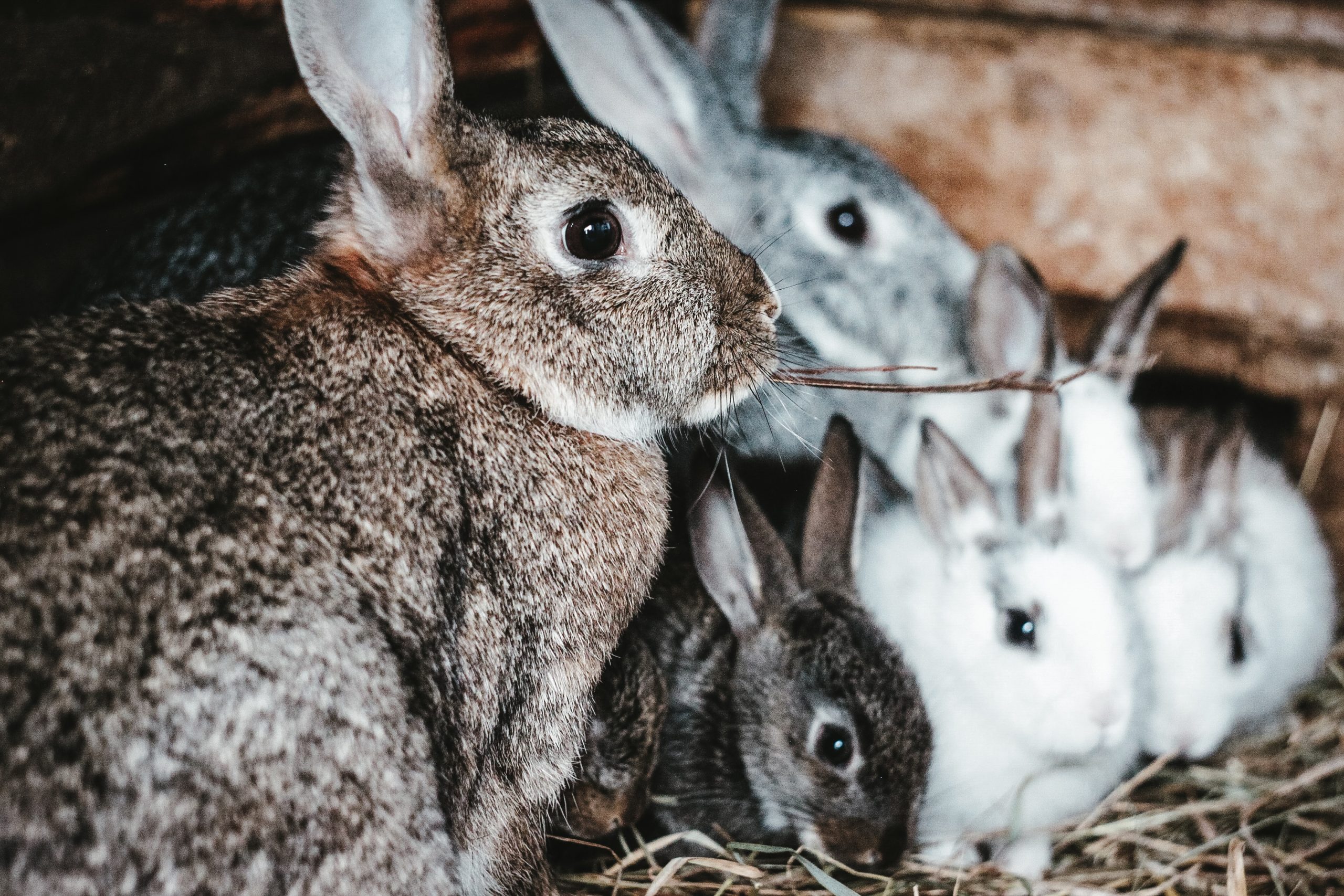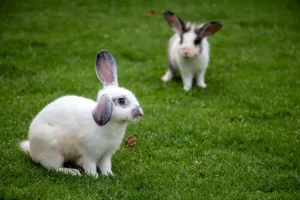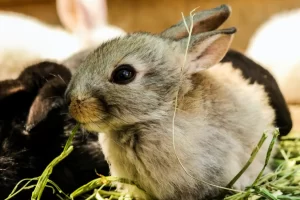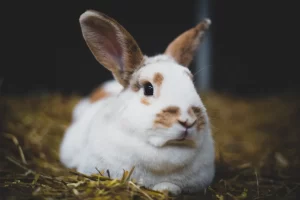Have you ever wondered how quickly rabbits grow? Well, wonder no more! In this article, we will delve into the fascinating world of rabbit growth and explore the factors that influence their development.
From nutrition to physical changes, we will cover it all. By the end, you’ll have a clear understanding of just how fast these furry creatures can grow.
So, let’s jump right in and discover the secrets of rabbit growth!
In This Article
- 1 Key Takeaways
- 2 Growth Rate of Newborn Rabbits
- 3 Factors Influencing Rabbit Growth
- 4 Developmental Milestones in Rabbit Growth
- 5 Nutrition and Rabbit Growth
- 6 Physical Changes During Rabbit Growth
- 7 Average Size and Weight of Adult Rabbits
- 8 Comparing Rabbit Growth to Other Small Animals
- 9 Frequently Asked Questions
- 9.1 Can Rabbits Continue to Grow After Reaching Adulthood?
- 9.2 What Are the Main Factors That Can Stunt a Rabbit’s Growth?
- 9.3 How Long Does It Take for a Rabbit to Reach Its Full Size and Weight?
- 9.4 Are There Any Specific Nutritional Requirements for Rabbits During Their Growth Phase?
- 9.5 How Does the Growth Rate of Rabbits Compare to That of Guinea Pigs or Hamsters?
- 10 Conclusion
Key Takeaways
- Newborn rabbits double their birth weight within a few days.
- The growth rate of rabbits is influenced by genetics, nutrition, and living conditions.
- Rabbits go through developmental milestones, including newborn, juvenile, adolescent, and adult stages.
- A balanced diet that includes fresh vegetables, hay, and pellets is crucial for rabbit growth.
Growth Rate of Newborn Rabbits
You’ll be amazed at how quickly newborn rabbits grow. When it comes to newborn rabbit care, understanding their growth stages is essential.
During the first week, baby rabbits, also known as kits, double their birth weight within just a few days. Their eyes and ears are closed, and they rely solely on their mother for warmth and nourishment.
By the end of the second week, their eyes start to open, and they begin exploring their surroundings.
At three weeks old, kits start nibbling on solid food, in addition to nursing.
By four weeks, they’re fully weaned and can eat solid food exclusively.
It’s important to provide a clean and safe environment for the growing rabbits, ensuring they’ve plenty of fresh water, a balanced diet, and regular check-ups with a veterinarian.
Factors Influencing Rabbit Growth
If you want your rabbits to grow quickly, it’s important to consider various factors that can influence their growth.
The influence of genetics plays a significant role in determining how fast rabbits grow. Certain breeds have been selectively bred for larger size and faster growth, which can result in rabbits that reach maturity at a quicker rate.
However, the impact of the environment shouldn’t be underestimated. Providing rabbits with a nutritious diet, clean and spacious living conditions, and regular exercise can all contribute to their growth and overall health.
Additionally, stress and illness can hinder growth, so it’s crucial to ensure that rabbits are kept in a calm and disease-free environment.
Developmental Milestones in Rabbit Growth
As your rabbits develop, they’ll reach important milestones in their growth. Understanding these developmental stages is crucial for providing the best care for your furry friends.
The rabbit growth stages can be divided into four main phases: newborn, juvenile, adolescent, and adult.
During the newborn stage, which lasts for about 1-2 weeks, the baby rabbits are blind and hairless, relying solely on their mother for nourishment and warmth.
The juvenile stage begins around 2-4 weeks, when their fur starts to grow and they begin exploring their surroundings.
At around 8-12 weeks, rabbits enter the adolescent stage, where they experience rapid growth and start to develop their adult teeth and sexual maturity.
Finally, the adult stage begins at around 6 months and continues throughout their life.
Monitoring your rabbits’ growth using a rabbit growth chart can help ensure they’re meeting their milestones and growing properly.
Nutrition and Rabbit Growth
To support healthy rabbit growth, it’s important to provide a balanced diet that includes a variety of fresh vegetables, high-quality hay, and a small amount of pellets. Here are the nutritional requirements for optimal rabbit growth:
- Fresh vegetables: Rabbits need a daily intake of leafy greens like kale, spinach, and romaine lettuce. These vegetables are rich in essential vitamins and minerals that promote growth and overall health.
- High-quality hay: Hay is a crucial part of a rabbit’s diet as it provides necessary fiber for proper digestion. Timothy hay is the most recommended type for rabbits and should be available at all times.
- Pellets: While pellets should only make up a small portion of a rabbit’s diet, they’re a concentrated source of nutrients. Look for high-quality pellets that are specifically formulated for rabbits to ensure they receive the necessary vitamins and minerals.
The impact of diet on rabbit growth rate can’t be overstated. Providing a well-rounded diet that meets their nutritional needs will contribute to healthy growth and development. Remember to consult with a veterinarian for specific dietary recommendations for your rabbit.
Physical Changes During Rabbit Growth
During rabbit growth, you will notice changes in their size, fur, and overall appearance. Physiological changes occur as rabbits progress from birth to adulthood. In the first few weeks, their size increases rapidly, with a noticeable growth in body length and weight. Their fur also changes, becoming thicker and denser to provide better insulation. As they reach sexual maturity, male rabbits develop larger testicles, while females develop a dewlap, a loose fold of skin under the chin. Behavior changes during rabbit growth are also evident. Young rabbits become more independent, exploring their surroundings and displaying playful behavior. They may also exhibit territorial behavior, marking their territory with scent glands. These changes in size, fur, and behavior are important milestones in rabbit growth and development.
| Physiological Changes | Behavior Changes |
|---|---|
| Rapid growth in size | Increased independence |
| Thickening of fur | Playful behavior |
| Development of reproductive organs | Territorial marking |
Average Size and Weight of Adult Rabbits
You’ll find that adult rabbits are typically around 12-20 inches long and weigh between 2-11 pounds. These measurements can vary depending on the breed and individual genetics.
Here are three key points to consider about the average size and weight of adult rabbits:
- Average Growth Rate: Rabbits experience rapid growth during their first few months of life. They reach their adult size and weight within 6-8 months. However, growth rates can differ among breeds, with larger breeds taking longer to reach maturity.
- Reproductive Maturity: Female rabbits, also known as does, usually reach reproductive maturity between 4-6 months of age. At this stage, they’re capable of breeding and producing offspring. Male rabbits, or bucks, reach sexual maturity slightly later, around 5-7 months.
- Breed Variations: It’s important to note that different rabbit breeds can have varying sizes and weights. Some smaller breeds, like the Netherland Dwarf, may reach their adult size earlier, while larger breeds, such as the Flemish Giant, may take longer to fully mature.
Understanding the average growth rate and reproductive maturity of rabbits is essential for their proper care and breeding.
Comparing Rabbit Growth to Other Small Animals
Comparatively, rabbits tend to reach their adult size and weight faster than other small animals. When it comes to growth patterns, rabbits outpace their counterparts like guinea pigs. Several environmental factors can affect the growth rate of rabbits. These include diet, exercise, housing conditions, and overall health. Providing a balanced diet with a focus on fresh vegetables and hay can contribute to optimal growth. Exercise is crucial for rabbits as it helps develop strong muscles and bones. Ensuring they have enough space to move around and play is essential. Additionally, a comfortable and clean living environment promotes healthy growth. Regular veterinary check-ups and vaccinations also play a vital role in monitoring the growth and development of rabbits.
To further emphasize the point, here is a table comparing the growth patterns in rabbits and guinea pigs:
| Growth Factors | Rabbits | Guinea Pigs |
|---|---|---|
| Size | Rapid | Slow |
| Weight | Quick | Gradual |
| Maturity | Early | Late |
| Development | Rapid | Steady |
| Reproduction | Frequent | Infrequent |
As seen in the table, rabbits tend to exhibit faster growth in terms of size, weight, and overall development compared to guinea pigs.
Frequently Asked Questions
Can Rabbits Continue to Grow After Reaching Adulthood?
Yes, rabbits can continue growing after reaching adulthood. There is no maximum size for rabbits, as they can continue to grow in response to factors such as diet, genetics, and overall health.
What Are the Main Factors That Can Stunt a Rabbit’s Growth?
Factors affecting rabbit growth include nutrition, genetics, and overall health. Common health issues in growing rabbits, such as malnutrition or parasites, can stunt their growth. It’s important to provide proper care and veterinary attention to ensure healthy development.
How Long Does It Take for a Rabbit to Reach Its Full Size and Weight?
To ensure healthy growth in rabbits, factors affecting their growth rate include genetics, diet, exercise, and overall care. Provide a balanced diet, plenty of space for exercise, regular check-ups, and a clean living environment.
Are There Any Specific Nutritional Requirements for Rabbits During Their Growth Phase?
To ensure proper growth and development, rabbits have specific nutritional requirements during their growth phase. Providing the right balance of nutrients is crucial for their health and well-being. Proper nutrition plays a vital role in supporting rabbit growth.
How Does the Growth Rate of Rabbits Compare to That of Guinea Pigs or Hamsters?
When comparing the growth rates of rabbits to guinea pigs or hamsters, it’s important to consider various growth factors. Rabbits generally grow faster than guinea pigs but slower than hamsters due to their different physiological characteristics.
Conclusion
So, there you’ve it!
Rabbits grow at an astonishing speed, reaching their adult size in just a few months. From their tiny newborn bodies to their fluffy adult forms, these furry creatures undergo remarkable physical changes.
It’s fascinating to see how nutrition plays a crucial role in their growth, ensuring they reach their maximum potential. Compared to other small animals, rabbits truly stand out with their rapid and impressive growth.
So, next time you spot a rabbit, remember the hidden marvels happening beneath their adorable exterior!





